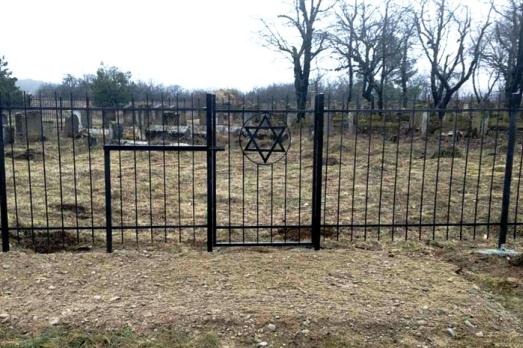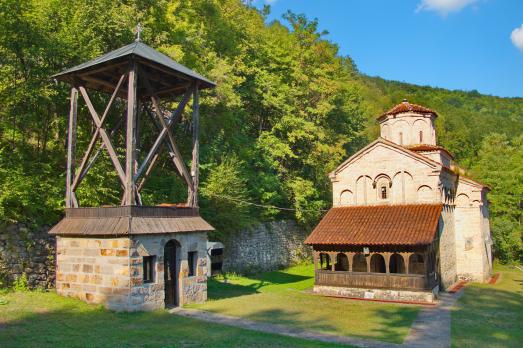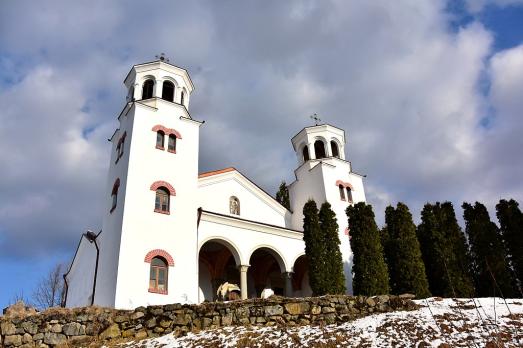
Klinte Church
Klintehamn, SE
Klinte Church is one of the 92 medieval churches on the island of Gotland.
Here you can search for a building to visit. You can use the map find destinations, or you can use the filters to search for a building based upon what different criteria.

Klintehamn, SE
Klinte Church is one of the 92 medieval churches on the island of Gotland.

Klishkivtsi, UA
Presumably, the Jewish Cemetery was established in the middle of the 19th century. The cemetery was operating after WWII, the latest preserved gravestone relates to 1955.

Stupčevići, RS
Klisura Monastery, formerly known as Dobrača, is an active women's monastery dating back to the Middle Ages. The monastery church, dedicated to the holy archangels Michael and Gabriel, was built at the end of the 13th century in the style of Raška, as was the neighbouring church of St. Achilles in present-day Arilje. The monastery church was renovated in 1798 and 1815-16.

Varshets, BG
The neat white of the Klisurski Monastery stands out today amidst the greenery of the valley of the Vreshtitsa River. The Klisurski Monastery was founded in 1240 during the Second Bulgarian Empire. Nevertheless, the buildings that stand today were built in the 19th century, as the monastery was destroyed several times in the course of its history by the Ottomans. It is the fourth largest monastery in Bulgaria and it offers visitors the possibility of staying overnight on its premises.

Nijeholtwolde, NL
The bell chair is located at the small cemetery in Nijeholtwolde.
Noordscheschut, NL
This church is listed as a Province Monument of the Netherlands.

Megen, NL
The Franciscan Monastery of St. Anthony of Padua in Megen was founded in 1648 after the Franciscans were expelled from 's-Hertogenbosch. The monastery remains active, with volunteers running the garden, and guests can stay there to experience monastic life.

Sybrandahus, NL
This one-aisled church was built around 1300 in Romano style, presumably as a chapel of the neighboring state, now a farm. In the choir of the church is the burial cellar of the Tjaerda family of Starkenborch.
Sibculo, NL
Reconstruction church. The roof turret disappeared at some point.
Grave, NL
Dutch Reformed Church. Originally church of the Beguinage Maria Graf, from 1581 church of the Franciscan monastery, later Walloon church, now Dutch Reformed Church. Built around 1500 in brick and consisting of a nave with a three-sided choir closure, a polygonal brick staircase tower on the northwest corner. Originally vaulted internally, now covered by a flat stucco ceiling. Oak pulpit from around 1650, two-armed copper candlesticks (18th century) on the organ gallery. Single-manual organ with attached pedal, made in 1806 by J. Tits using older material. Bell frame with bell by anonymous founder, 1550, diam. 49 cm. House with saddle roof, the ridge of which is parallel to the plastered façade, which bears a cornice with triglyphs and has a simple early 19th century entrance surround. The roof dates from the second half of the 17th century. The house belonged to the Beguinage, called Maria Graf, founded in the 13th century, turned into a Franciscan monastery in 1581 and the path confiscated in 1802. The current Reformed Church and Bagijnenstraat 5 also belong to the original Beguinage. No. 1a-3 was originally the rector's residence. House from the middle of the 16th century with saddle roof (hipped on the west side) and façade with early 19th century embossed plasterwork and simultaneous entrance surround (with fanlight in which a diamond motif of segmental rods). Internal Gothic key pieces, staircase, kitchen and fireplaces from around 1800. This house was part of the Beguinage, later, until 1802, a monastery house of the Franciscan Sisters, then a minister's residence.

new
The Chassidic Route is a cultural and historical trail tracing the rich legacy of Jewish communities in southeastern Poland and western Ukraine. This region was central to the rise of Chassidism in the 18th century. Here, we highlight 10 remarkable synagogues you’ll discover along this route.

he cradle of the Industrial Revolution in Germany, Chemnitz, is well-known for its industrial heritage landscape, but the city is also home to remarkable examples of religious architecture from different historical periods. Join us as we explore the key landmarks of this European Capital of Culture 2025.

The twin towns of Nova Gorica (Slovenia) and Gorizia (Italy), lying on the border between the two countries, have a rich religious heritage, steeped in centuries of tradition. If you are looking for ideas for your visit, take note of these 10 religious sites that you should not miss.